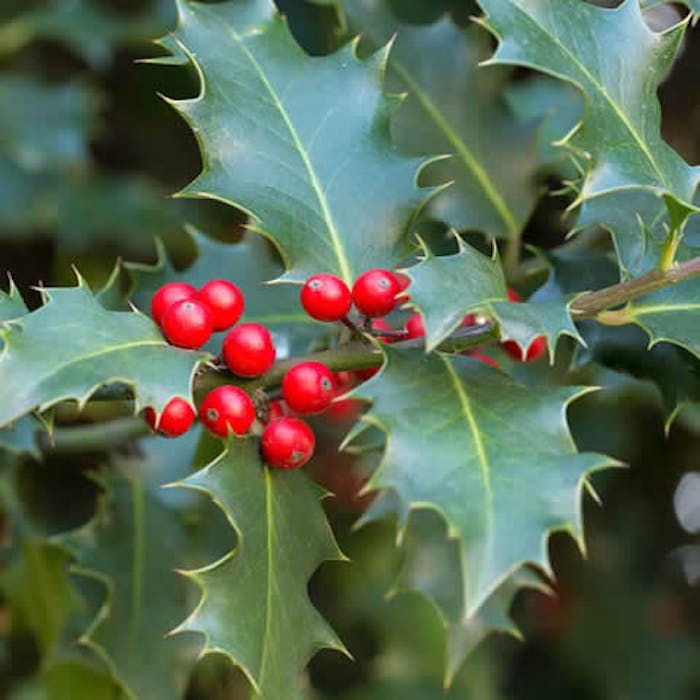
Holly - brightening the winter woods
The Common Holly (Ilex aquifolium) is one of Britain's few native evergreen trees. Commonly associated with Christmas, it has distinctive leaves and attrractive bright red berries.
The holly is a very common tree. It is native in the UK and across Europe, North Africa and western Asia. It is common in woodland, scrub and hedgerows, especially in oak and beech woodland. Many garden varieties also exist, as the tree is versatile, easy to grow, attractive, and tolerates severe pruning. Mature trees can grow up to 15m and live for 300 years. The bark is smooth and thin with lots of small, brown 'warts', and the stems are dark brown.
The dark, glossy leaves remain green year-round. The holly has male and female forms and only female bushes carry the berries.
Holly provides dense cover and good nesting opportunities for birds, while its deep, dry leaf litter may be used by hedgehogs and small mammals for hibernation.
The flowers provide nectar and pollen for bees and other pollinating insects. The leaves are eaten by caterpillars of the holly blue butterfly, along with those of various moths, including the yellow-barred brindle, double-striped pug and the holly tortrix.
The berries are a vital source of food for birds in winter, and small mammals, such as wood mice and dormice.
Holly branches have long been used to decorate homes in winter. The tree was seen as a fertility symbol and a charm against witches, goblins and the devil. It was thought to be unlucky to cut down a holly tree.
Further reading
Links to external websites are not maintained by Bite Sized Britain. They are provided to give users access to additional information. Bite Sized Britain is not responsible for the content of these external websites.
